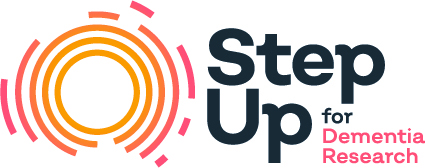Why are people so excited about donanemab?
Donanemab is the first drug to be approved in Australia that alters the course of Alzheimer’s disease. Previous medications have only helped to manage the symptoms of Alzheimer’s disease.
How does it work?
Donanemab is given as an intravenous infusion every four weeks for a maximum of 18 months. It targets a protein in the brain called amyloid, which is thought to provide the tinder for degeneration or atrophy of the brain that another tau protein in the brain seems to drive. Donanemab binds to and removes the sticky amyloid plaques, much like an antibody would do.. It is thought that removing the amyloid will stop the tau then driving the neurodegeneration. For some people with low to moderate disease progression, donanemab can remove amyloid to a level that is below the threshold for diagnosis. For those with moderate to severe Alzheimer’s disease, however, donanemab won’t work because the amyloid build-up is too advanced by then.
How can I access Donanemab for myself, or my loved one?
There is a slowly growing number of sites where you can access donanemab; and there will likely be more to follow. There are groups of clinicians who are working together to provide this therapy in private settings and potentially via public private partnerships. You will need to speak to your General Practitioner or your specialist about how you can access it in an area close to you.
Will it cure me or my loved one?
Donanemab is not a cure, and we need to manage expectations. It will not cure you or your loved one. Donanemab is estimated to slow the progression of Alzheimer’s disease by around six months. However, the neurodegeneration will continue despite being on the medication and despite having the amyloid removed from your brain.
How much does Donanemab cost, and why doesn’t the government support it on the Pharmaceutical Benefits Scheme (PBS)?
We’re not sure of the exact costs of donanemab currently, but the estimate is around $80,000 per year. This is because the two major side effects of donanemab are brain swelling and bleeding, due to possible over-activation of the brain’s immune mechanisms. The complications often present with no symptoms, so what brings up the cost is regular MRI (and other) scans to ensure a patient is an appropriate fit for the drug, and to support early detection of any side effects. Moreover, anyone who has two copies of an Alzheimer’s risk gene called ApoE4 is at a higher risk of brain swelling and bleeding and cannot take donanemab, thus any patient considering the drug is also required to have genetic testing to check for this. Donanemab was only approved by the Therapeutic Goods Administration in May this year. The PBS advisory committee are reviewing an application for donanemab to be listed on the scheme, this month. However, a significant cost-effective benefit would need to be shown.

Professor Amy Brodtmann (MBBS, FRACP, PhD, FANZAN)
Professor Amy Brodtmann is a stroke and cognitive neurologist and clinician-researcher at the Royal Melbourne Hospital and Monash University, respectively. Amy’s research focuses on identifying risk and protective factors for late-life cognitive impairment and dementia. Her special interest is in frontotemporal dementia, imaging and blood biomarkers, and vascular contributions to late-life cognitive impairment. She has made significant contributions to dementia treatment, care, and research in Australia and internationally. Amy is member or president of several domestic and international dementia, neurology and stroke associations, including the American Academy of Neurology – the largest neurology organisation in the world.
